| We went north to Green
Bay. One may well ask why. It advertises a National Railroad Museum. We
should know better. National means it has some national recognition (but not
funding). In many ways it was the most disappointing railroad museum we have
visited but then one can have too much of a good thing. | 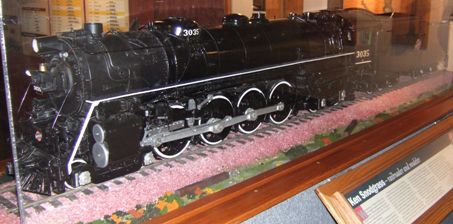 |
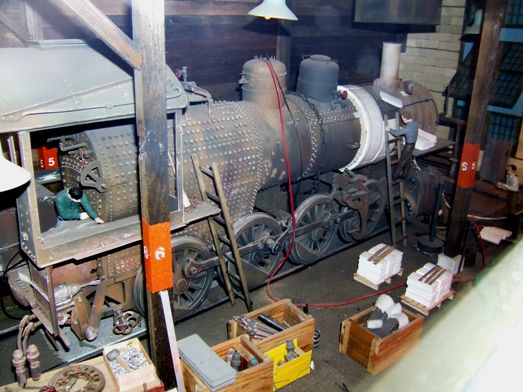 |
There are a number of models of very high quality. 3035 is a model of the
Chicago and North Western 'H' class built in 1929 to haul freight from
Chicago to Omaha. There are or have been
some amazing model engineers about. This model was built by Ken Snodgrass and must
represent many thousands of hours work. It is one of several on display.
The diorama portrays a locomotive under repair. |
| A much smaller model of a
railcar (motorised carriage) in HO scale. There never was a lot of passenger
traffic on most lines and today this sort of unit is no longer found. |  |
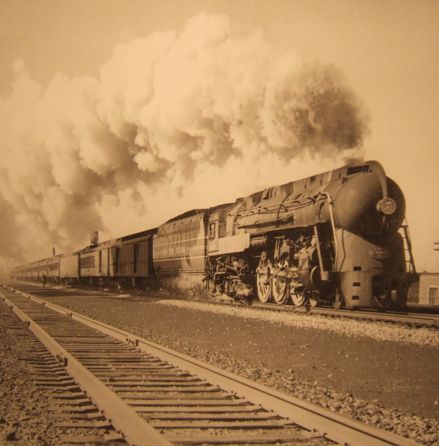 |
The museum has a collection of over 15,000 photographs, only a few of which
are on display. This probably dates from the 1930s. |
| More familiar to us is
this British A4. Several of this type are preserved in the US. It is
probably the most famous British locomotive type. This particular one is at
the museum as part of an exhibit of Dwight D Eisenhower's wartime command
train (codenamed "Alive"). Not that this engine ever hauled it, it just had
its name changed while in service in Britain during World War II. But image
is more important than fact. | 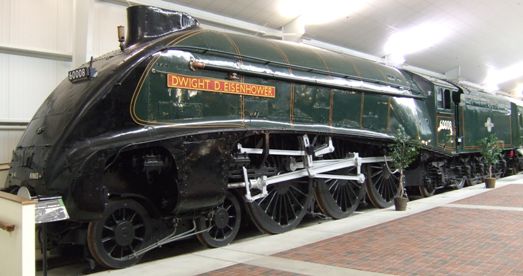 |
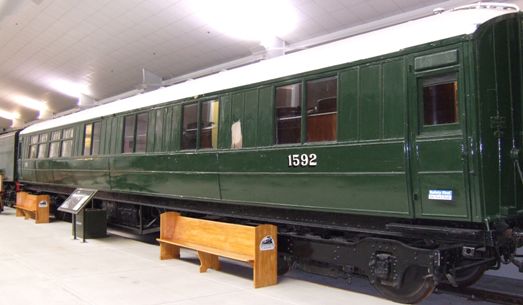 |
This is one of the command carriages of which two are on show. I think it
was probably a LNER teak panelled coach, very beautiful in its day (and not
painted!). |
| This is a Pennsylvania
GG1 class electric locomotive, No 4890, one of 139 built in the 1930s to
haul trains at up to 100mph between Philadelphia and New York. Designed by
Raymond Loewy it is regarded as an iconic design (although you can't really
see it from this angle). | 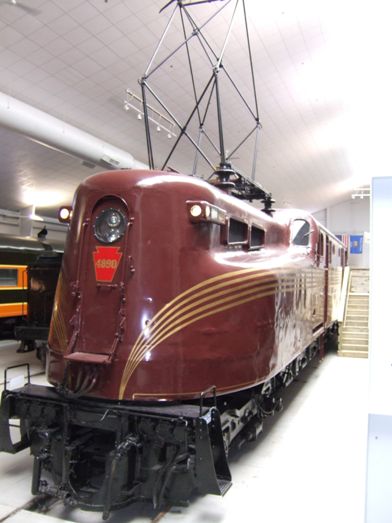 |
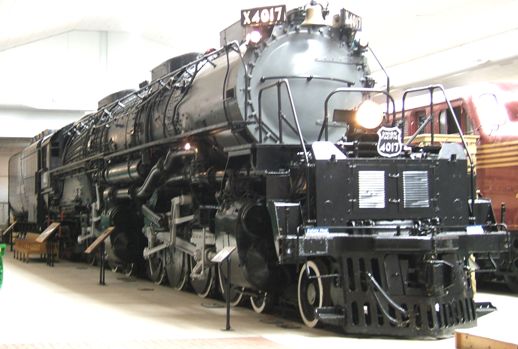 |
4017 is a Union Pacific 4-8-8-4 'Big Boy'. The largest locomotives ever built, the
Big Boys were primarily used to haul 3600 ton coal trains over the Wasatch
range in Utah during the World War II. 25 were built. They were articulated
with a 65 ft long boiler and generated 6500 hp, and remained in service
until 1959. |
| A much smaller 2-8-0
Consolidation locomotive built for the US Army and used all over the world.
Built in 1917 by Baldwins, this particular loco ended its working life
in 1961 in Korea. | 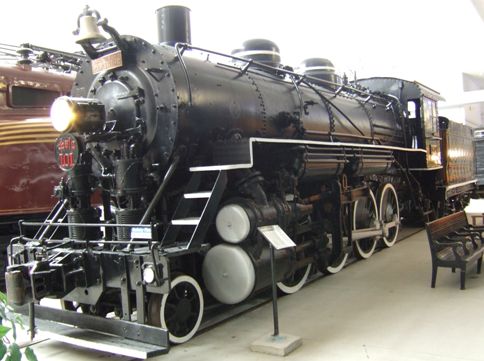 |
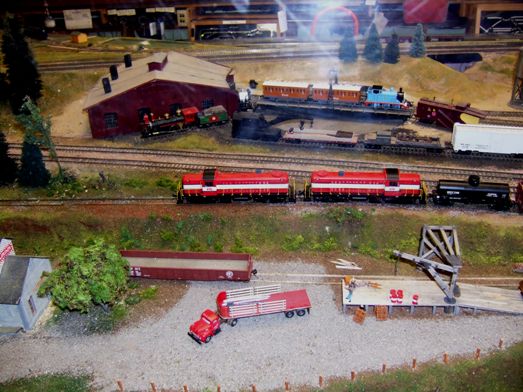 |
The old depot (station) building housed a substantial model railroad in HO
scale. Lots of little detail points with lots of bits for the kids (Thomas
the tank engine). |
| I was more interested in
the model ore loading dock and the 'laker' ore carrier moored alongside. The
real docks load a freighter like this in about 4-6 hours. The trains feeding
them are huge, not as shown here. | 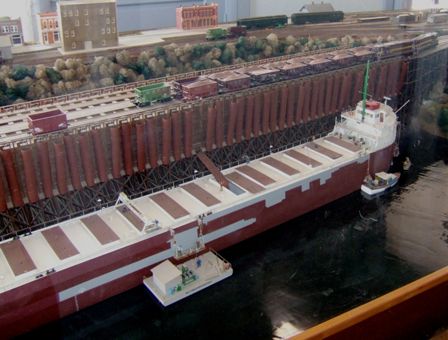 |
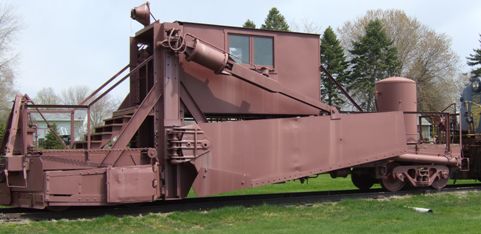 |
Outside is a collection of less prized items in various states of decay.
This auxiliary plough had been done out in primer. The blades are pushed out
from the sides by hydraulic rams. |
| The driving force behind
starting the museum was a US army colonel from the Transportation Corps,
hence the presence of a number of ex-military items. This is an RSD-1
Switcher of which 13 were originally built before WWII. More were
constructed during the war. | 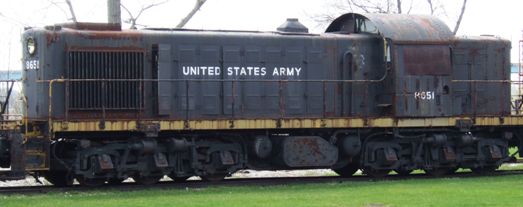 |
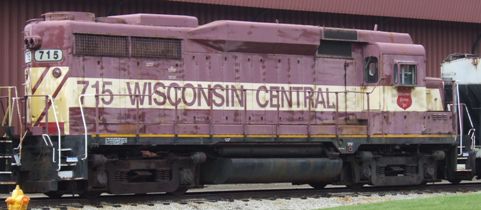 |
The principle railroads in the area were the Wisconsin Central and the Soo
line. They merged in 1961 but are now both owned by Canadian Pacific. This
is a GP30 built in 1963 originally for the Soo Line. This was the first
model deemed to be second generation. |
| There is covered
accommodation for some of the stock items, both locomotives and passenger
cars. These have been cosmetically restored but are in fairly poor condition
if one looks closely. | 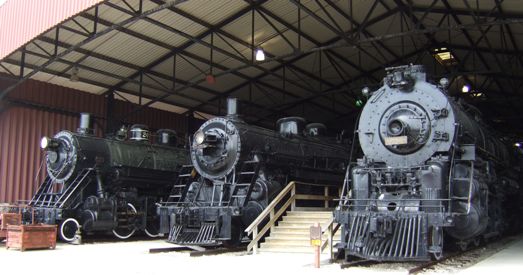 |
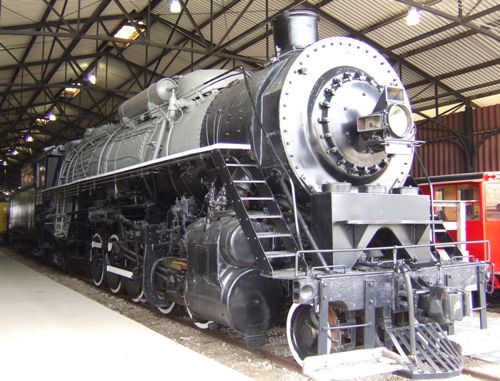 |
They are a reminder of just how large railroad equipment is over here in
comparison with the UK. This would have been a mid sized freight loco and is
far larger than anything which existed in the UK. This 2-10-2 Class E1 was
built in 1919 for iron ore trains on the Duluth, Missabe and Iron Range
Railroad. It was capable of pulling 100 50 ton ore wagons. |
| This was a very early HST
equivalent - the Aerotrain. Never very successful because of poor ride
quality and reliability, it was an early victim of the rise of the motor
car. It was built in 1955 using a re-geared lightweight switcher and
passenger cars from a bus company. Its styling was taken from contemporary
automobile design to try to tempt people back to rail travel. It was used
between Chicago and Cleveland but struggled above 60mph. It was retired in
1966. However today's Amtrak trains were developed from it. | 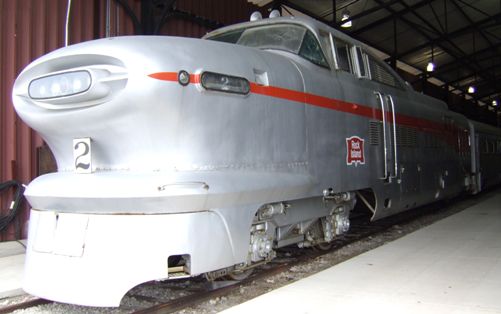 |
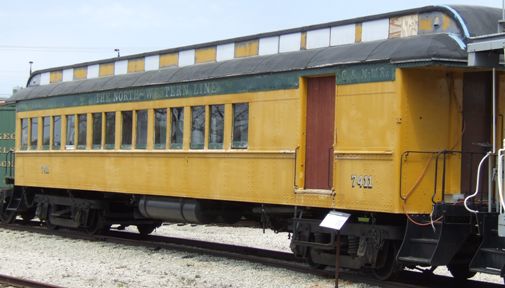 |
Typical of the older style of passenger cars, these were common in the early
1900s. It is in remarkably good condition for its age. |
| You can walk through some
of the passenger cars. This was a very different sort of travel (first
class) between the wars. This was an observation car. | 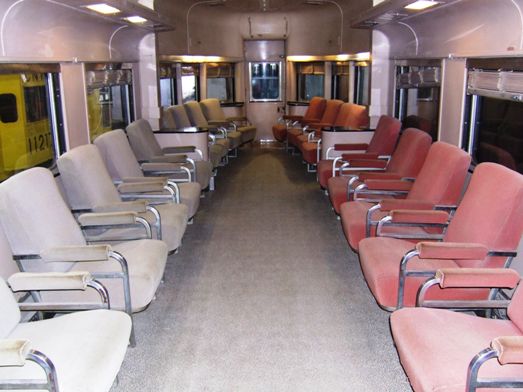 |
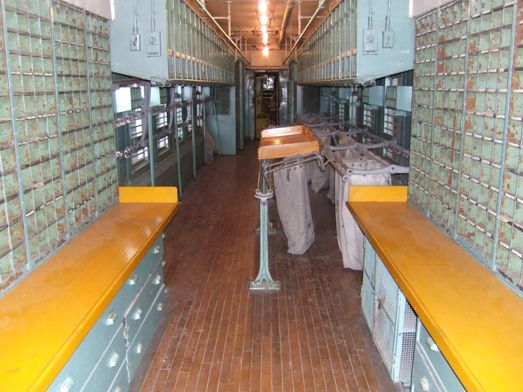 |
Similar construction was used for the travelling post office units, many of
which are preserved as a part of history. |
| Today if you can get
anything to eat on a train, it is prepackaged 'airline' food. Here in the
dining car we have a full blown commercial kitchen capable of producing
hundreds of meals. Lots of stainless steel. | 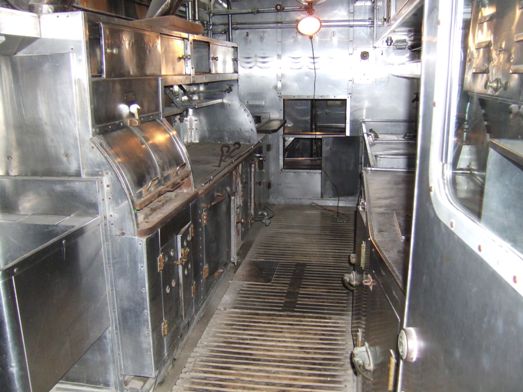 |
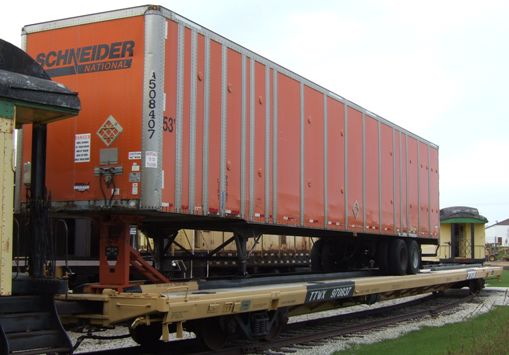 |
I'm not sure about this in a museum already since it is a common and growing
mode of transport in the US, and one likely to increase as the price of fuel
rises. Mind, we found several hundreds of these wagons parked on a branch
line in northern Minnesota. |
| All in all not the best
railroad museum I've been to. Even this tourist train around the site was a
fake. There is a diesel engine in the tender and only one draughty carriage.
However I did see (but not photograph) a real live beaver in the adjacent
pond. | 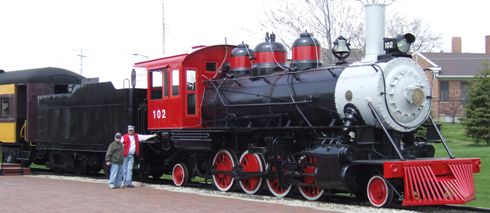 |
|